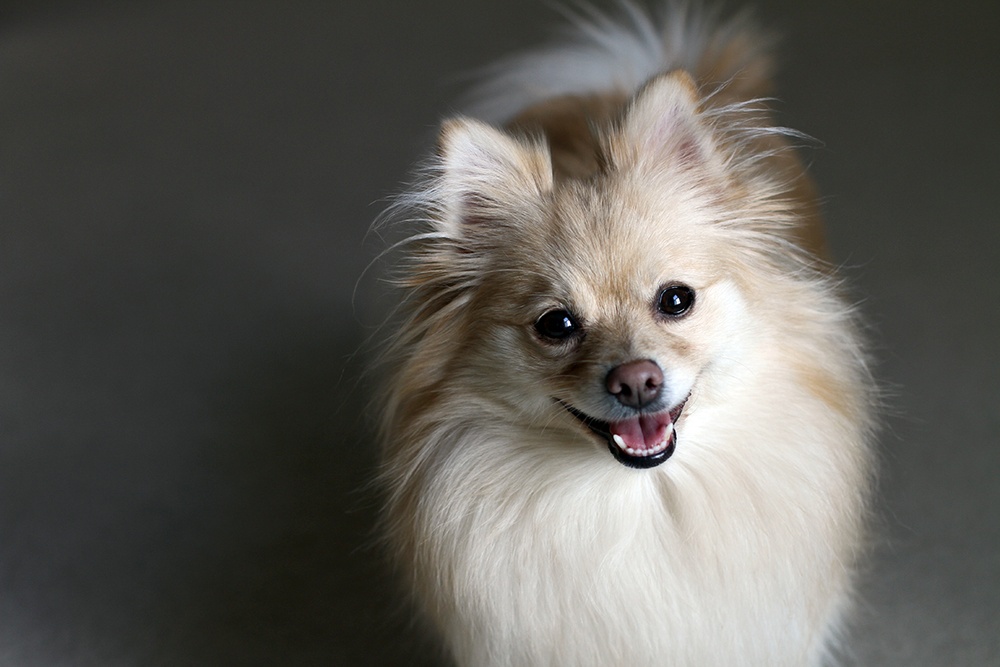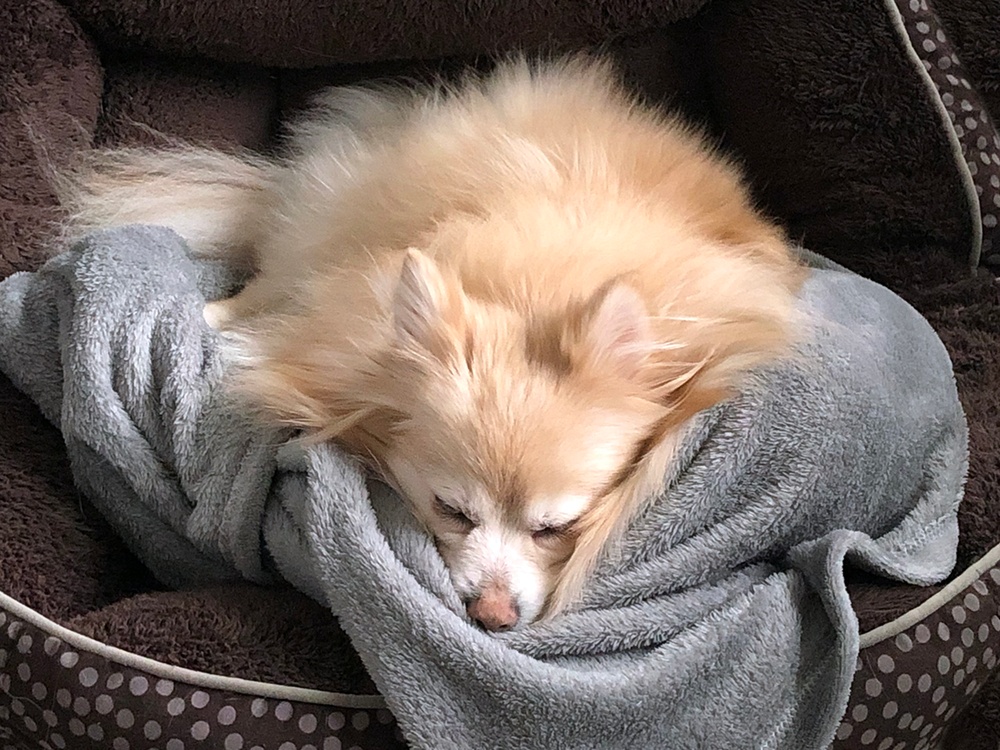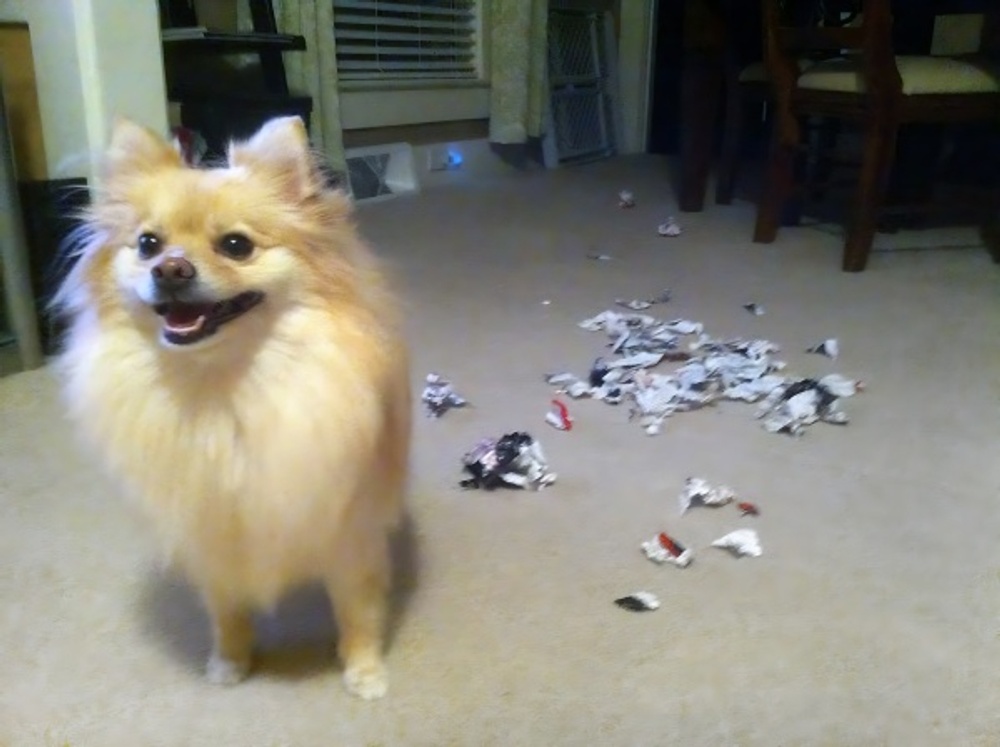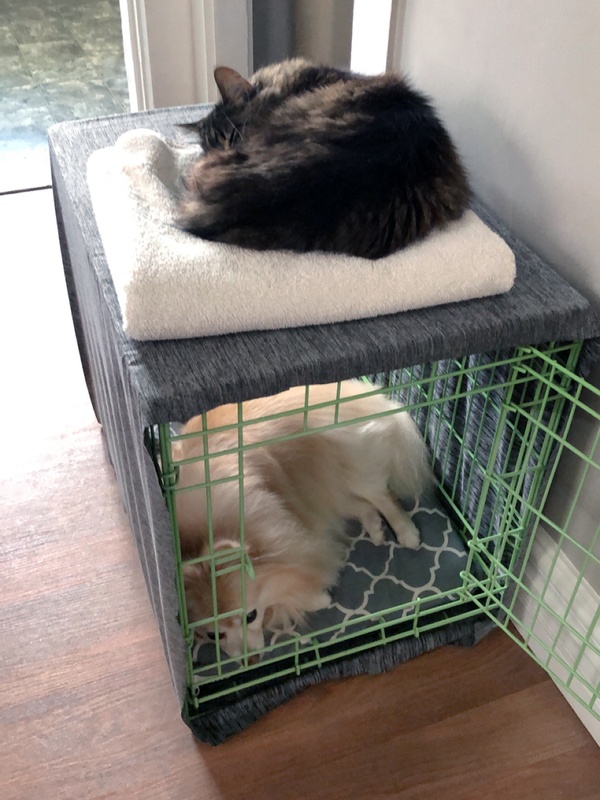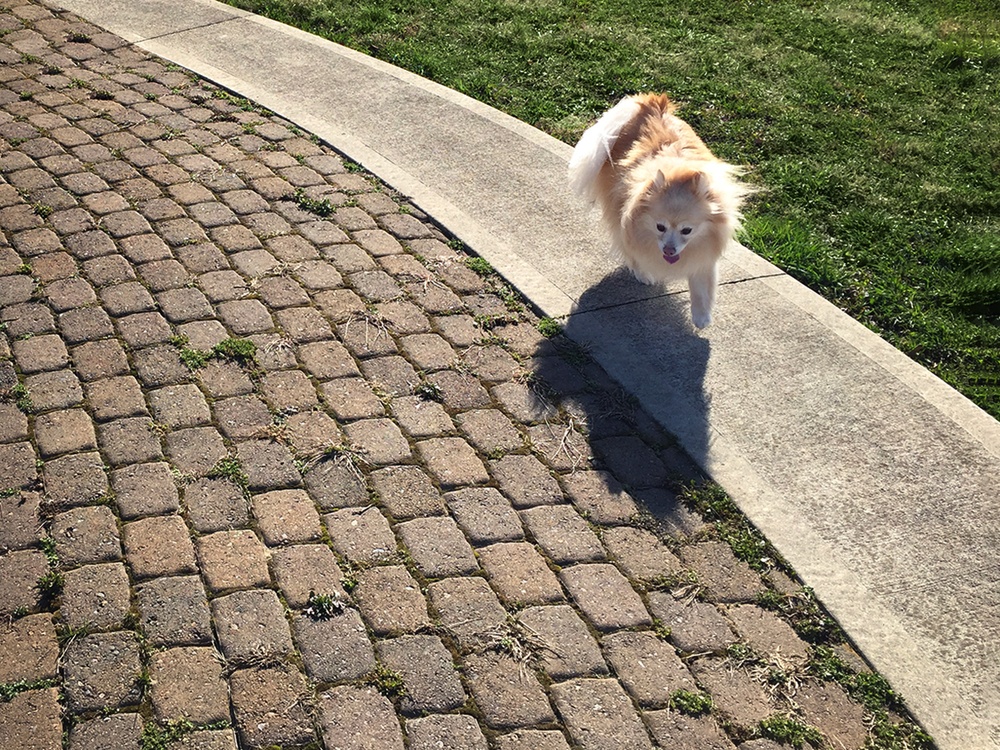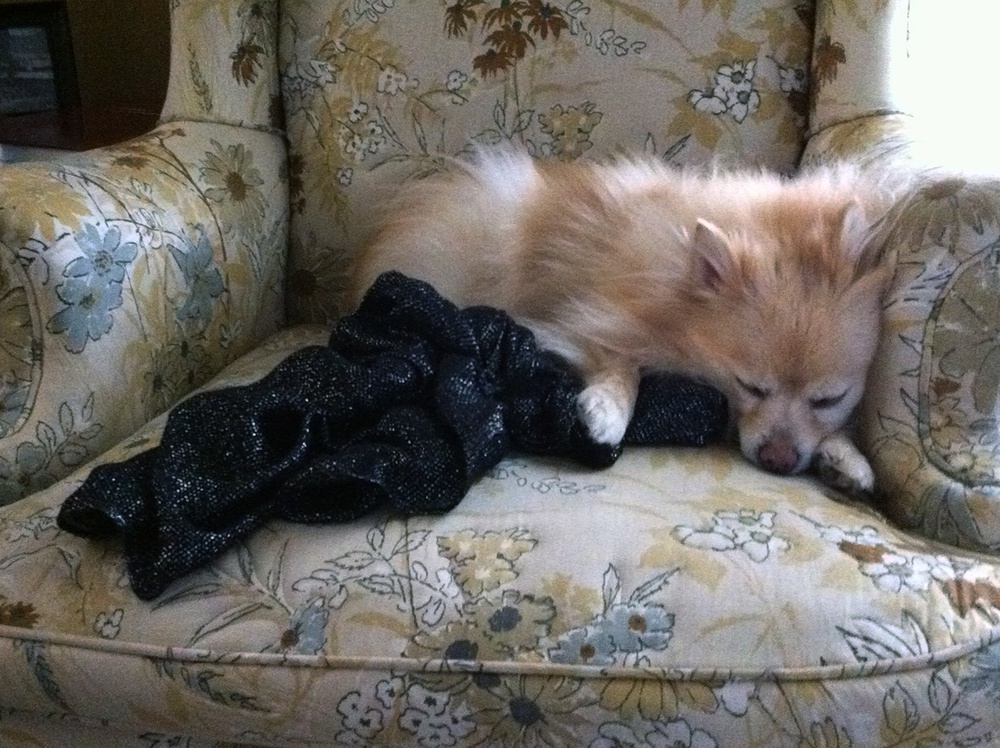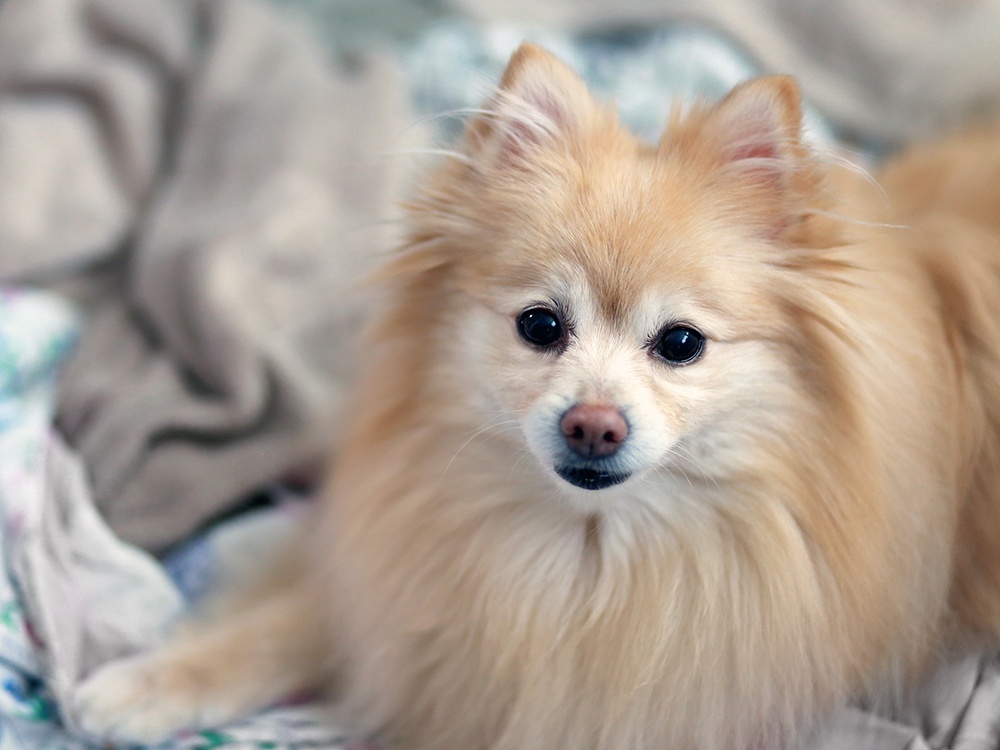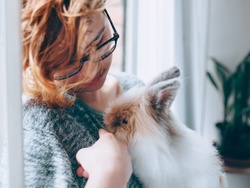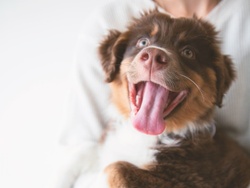How To Help Your Dog With Separation Anxiety
When I adopted my dog, Sadie, she was one or two years old. She had already had at least two families plus a stay in a shelter before being picked up by a rescue organization. All that instability in her young years set her up to develop separation anxiety.
Combine that with the fact that I work from home (meaning I’m with her constantly), and you can understand how her separation anxiety quickly grew from a general nervousness to a moderate case.
She would become very nervous whenever she noticed we may be preparing to leave the house, immediately barking and spinning (she is a Pomeranian) as soon as my hand touched my keys. While we were away, Sadie would pace, whine, and have accidents in the house.
She loved her crate - but only with the door open - and would eventually be able to calm herself enough to lay in her crate once the fear subsided. I hated that she was struggling so much. I began to develop anxiety about her anxiety.
I read endless content on how to fix dog separation anxiety, talked with my veterinarian many times, and tried quite a few techniques with varying results to help Sadie manage her anxiety.
What Is Separation Anxiety In Dogs?
Dogs are social creatures, originating from pack animals and then selectively bred for thousands of years as companions to humans. Connection is literally in their genetics, they instinctively want to be with their pack or person at all times.
When they experience trauma or simply haven’t learned that people will return, they fear being left alone. That fear can grow into separation anxiety, which at its root is an extreme fear of being abandoned. Dog separation anxiety is a pretty common canine challenge, the AKC estimates 14% of dogs struggle with separation anxiety.
Just like humans, dogs with separation anxiety experience emotional distress and fear when separated from the person they are attached to. Their anxiety is often expressed in negative ways like refusing to eat, endless barking, and escape attempts.
Why Do Some Dogs Develop Separation Anxiety?
While many studies have been done on the roots of why some dogs struggle with separation anxiety while others don’t, there is no conclusive evidence. There is a connection between dogs who have been adopted from shelters or rescues having higher rates of separation anxiety than their peers who had a single family since puppyhood.
Likely, traumatic changes (from a change of family, schedule, or residence) or the loss of a family member can lead to separation anxiety. Other changes that seem less intense may still trigger anxiety as every dog’s threshold is unique.
What are the signs of separation anxiety in dogs?
Dogs experiencing separation anxiety struggle with the ability to self-soothe when left alone or separated from their person. To help your dog with separation anxiety, it’s important to first identify the most common dog separation anxiety symptoms. It can manifest in unique ways based on your dog’s unique personality, some of the more common symptoms include:
Obvious restlessness as you prepare to leave
Refusal to eat or drink
Excessive barking, whining, and howling
Drooling
Pacing
Heavy panting
Inappropriate elimination, accidents from otherwise house trained dogs
Attempts to escape
Chewing, digging, and destruction
Self-harm via compulsive licking
Separation anxiety is more than a nervousness when apart or your dog chewing up a favorite slipper out of boredom. It is a serious condition that causes significant stress to dogs and to their owners.
If your dog’s symptoms are severe or you have concerns for their safety consult your veterinarian right away for diagnosis and options. Some medical conditions can be confused with anxiety so it’s best to rule out other potential issues.
How To Help A Dog With Separation Anxiety: Homeopathic and Natural Options
In helping your dog overcome their separation anxiety, the most important thing to keep in mind is that they are not choosing to act out, they are struggling with fear that is simply unmanageable. Remain calm and confident in your training, dogs pick up on human emotions and if you are calm it will help them to also be more calm.
When working on separation anxiety training options, work in small steps so your dog has time to learn and adapt in a less than ideal learning environment. While it seems counterintuitive, small steps are actually more effective than sweeping changes – it’s ok to even take a step back if needed so your pet has time to adjust.
It’s important to note that if your dog struggles with moderate to severe separation anxiety, consulting your veterinarian or a certified separation anxiety trainer is the best first step.
Effective Dog Separation Anxiety Training Options
Positive reinforcement
The most effective training method can also be used for working through mild-to-moderate separation anxiety. Set aside a bit of time every day to practice a very short leaving-and-returning routine. Start with the smallest amount of time your dog can handle and use high-value treats to make the experience positive - rather than scary.
When you return, calmly reconnect with your dog. The goal is to create and reward a calm departure and reunion, changing the focus from your absence to your dog's ability to remain calm in uncertain situations.
Sadie's Review: Sadie struggled with separation anxiety if she was even suspicious I might be leaving. We started small by teaching her that the sound of keys is not a scary thing. I would randomly pick them up, move them, or just have them around. Whenever they made a noise I tossed Sadie a treat. She soon associated my keys with snacks and they became less and less of an issue for her.
Independence training
If your dog is struggling with practiced departures, work on independence training. This is a long-game approach with many small steps but is a way to work with your dog at the level they’re at.
Start by practicing short moments away, like taking a shower alone with the door closed. This is easier for most dogs to tolerate because they can still hear and smell you, confirming that you are present even while technically separated.
Gradually increase the time you’re apart, if your dog enjoys their crate, you can crate them while you make dinner or clean up a bit. If your dog doesn’t enjoy being crated, you can simply use a closed door to create separation.
Next, practice leaving the house in very small durations. Check the mailbox or take out the trash while your dog remains inside. Start slow because this is a big step for your dog since they can’t see or hear you.
Once they are okay with this level of separation it’s time to take a short drive around the block. Again this is a big step because now your car is involved. Over time, slowly run longer errands, working up to an entire workday without your dog becoming anxious.
Sadie’s Review: This is ultimately what worked best with Sadie, in combination with other techniques. Meeting her at her threshold of tolerance was a slow and long process – but an effective one.
Crate training
Crate training can be helpful for some dogs and detrimental for others. If your dog feels that their crate is their safe place, it can help greatly with separation anxiety. However, if the crate has ever been used as punishment or the dog has been forced in, the crate will very likely add to the stress and anxiety.
You know your dog best, start with an open crate and gauge their reaction - especially with a shelter or rescue dog. If they are uninterested, don’t force it.
Sadie’s Review: Sadie loved her crate, but only with the door open. So we worked with that. We kept her crate in our kitchen as it was a central location to our most common comings and goings. When we would leave we simply put a baby gate up in the kitchen doorway, this gave her the choice of being in her crate or not and made cleaning up of any accidents much easier.
Enrichment
While you’re away, you can set your dog up with an enrichment puzzle toy that will keep them mentally engaged.
Sadie’s Review: I chose a snuffle mat for Sadie because she is very food motivated and they provide both physical and mental stimulation. Sadie loved it from day one, we would put her dry kibble or treats within the fleece strips for her to use her nose and foraging instincts to find the rewards. I think it helps keep her mind busy rather than worrying.
Again, being very food motivated, I liked to mix it up with Sadie’s enrichment toys. I tried dozens of options, and one that we always came back to was a Kong chew toy with some peanut butter inside.
When choosing activity puzzles or treats be vigilant about avoiding choking hazards. Even though Sadie was passionate about bully sticks, we did not use them for separation anxiety management because they can become hazardous when chewed down to smaller sizes.
Activity: Burn Off Some Energy
Prioritizing your dog’s physical and mental engagement is a reliable way to help manage their separation anxiety. If you can, take your dog for a good walk or play a moderate-energy game with them for at least 20 minutes. Avoid getting them riled up, we want to burn off some energy, not create more.
Sadie's Review: This little Pomeranian has endless energy so it didn’t impact her separation anxiety based on when we scheduled her walks. This is still a great option to try out for your dog to see if it helps their unique personality.
Dog Walker or Daycare
If your dog tolerates short separations, but struggles with longer ones a pet sitter or dog walker could be a solid solution. For high-energy dogs who suffer from separation anxiety, a daycare can be an effective way to manage their needs. A pet sitter can also alleviate some of your anxieties around your dog by sending you updates and photos during their check-in.
Sadie’s Review: When we would go on vacations without Sadie, our pet sitter would send photos several times a day showing what they were up to and that Sadie was having a good time. We chose in-house sitters (at our house or theirs) because of Sadie’s past with shelters. I didn't want to trigger her fear of abandonment in a non-home setting.
As a bonus, I always felt relieved knowing my pup was safe and calm.
Scented Comfort Items
Research has shown scents from familiar humans create a positive reaction from dogs. Scent is a powerful tool in evoking emotions - especially for dogs. Leaving your dog with something that smells like you can help ease their anxiety while you’re apart. You don’t need to choose a specifically smelly item as dog’s noses are incredibly sensitive when compared to humans. They can even use scent to estimate time, like knowing when their human is due home from work.
Sadie's Review: We took a recently worn shirt or Sadie's blanket from her crate with her when she needed to be left at the groomer and it regularly made a difference. In fact, the one time I forgot to bring it, she had a much more difficult time adapting to being apart.
How To Help A Dog With Separation Anxiety: Supplements and Medications
Talk with your veterinarian about the severity of your dog's symptoms and if calming supplements or prescription medication would be the best option. Medication can be used to temporarily help your dog during training until they feel more comfortable without you or it can be the best solution long-term.
Sadie’s Review: Our veterinarian suggested some calming supplements and pheromone options to holistically help before trying prescriptions. Sadie was incredibly picky and didn’t care for the treats but I do think the pheromone diffuser was helpful for her as she seemed overall calmer once we started using them.
What Won't Help A Dog With Separation Anxiety
According to the Humane Society some of the common ‘quick fixes’ people may turn to won’t be effective in curing your dog’s separation anxiety, and could even make it worse:
Punishment: your dog is not misbehaving, they are having a fear-based response. Punishment can worsen this response
A Companion: Getting your dog another dog or other pet as a companion is usually ineffective because their anxiety is based on separation from you specifically, not just being alone.
Leaving music or the TV on: While it won’t make anything worse, it’s often not an effective solution.
Obedience training: training your dog is a key to responsible ownership, but because separation anxiety and its symptoms are not a result of a disobedient dog but rather a fearful one.
Your Dog Can Overcome Separation Anxiety
When it comes to dog separation anxiety, there are no quick fixes. Adopting a dog is a commitment and working with the dog you have is a big part of owning a dog.
We had many frustrations on Sadie’s journey with her separation anxiety, no one likes to come home to a puddle of pee or shredded mail. But in working with her to overcome it rather than blaming her for reactions she couldn’t control, I feel that we created a stronger bond.
The small steps and regular frustrations were absolutely worth seeing her progress. When I look back on how far we’ve come from the sound of keys setting her off to the calm and more self-assured dog she is today, I’m so proud of both of us.
Does My Dog Have Separation Anxiety Quiz
The more symptoms or more often your dog experiences the symptoms of separation anxiety directly equates to how likely they are to have diagnosable separation anxiety. Talk with your veterinarian about diagnosis and treatment options for your dog to live a happier and more content life.
Expert Answers from a Veterinarian on Helping Your Dog With Separation Anxiety
Q: What first steps should I take if I think my dog has separation anxiety?
A: At the first signs of anxiety owners need to be on high alert. This is most effective when starting early in life. Puppies are prime examples as they often do not enjoy being alone and if these fears are not quelled, true separation anxiety lies ahead.
My first recommendation is to contact a trusted dog trainer who uses positive reinforcement techniques. Time is of the essence to break negative behaviors so reaching out to a trainer early on will help guarantee success. They will formulate a training plan for your individual dog and troubleshoot any issues as they come along.
Q: When should I talk to my veterinarian about my dog’s separation anxiety?
A: While not necessarily a true medical issue, your veterinarian always wants to be informed about behavior issues as they arise. They may help guide you in finding a trusted dog trainer or behaviorist. For moderate to severe cases of anxiety, your veterinarian will discuss medication options that can be used alongside training.
Q: When is medication the right answer for my dog with separation anxiety?
A: Medication is never a wrong answer, though some pet owners have a stigma against medicating their pets. Providing anti-anxiety medication or a light sedative is a great way to reduce the panic some dogs develop during separation anxiety.
Medications can help by reducing the wind-up of stress and fear dogs experience. They induce a baseline feeling of calmness which helps facilitate training. Medication should always be considered in dogs that are harming themselves or causing major destruction from anxiety.
Fact checked by Veterinarian

Dr. Paula Simons is an Emergency and Critical Care veterinary resident on her way to becoming a veterinary criticalist. She is originally from Philadelphia, Pennsylvania, and completed her veterinary training in Ontario, Canada, at Ontario Veterinary College. Dr. Paula Simons has a particular interest in critical care nutrition, trauma, and pain management. She enjoys the management of surgical patients and troubleshooting complex cases. Additionally, she is a huge advocate for her patients and ensuring their comfort. She has two cats named Moo and Kal, whom she loves dearly. More About Us
